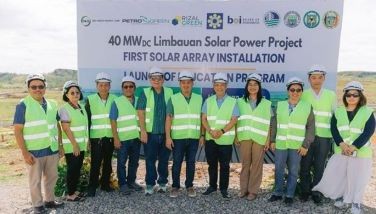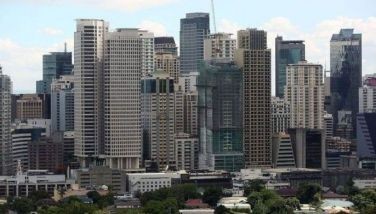Net growth via more coal power

From December 2024 up to this month, many big global banks have left and abandoned the Net Zero Banking Alliance (NZBA) formed in 2021. They realized that they are not optimizing their resources entrusted to them by their investors. So far these are the big banks that left the NZBA.
Six from the US: Bank of America, Citigroup, Goldman Sachs, JPMorgan Chase, Morgan Stanley and Wells Fargo.
Six from Canada: Bank of Montreal, Canadian Imperial Bank of Commerce, National Bank of Canada, Royal Bank of Canada, Scotia Bank and Toronto Dominion Bank.
Three from Japan: Mitsubishi UFJ, Nomura and Sumitomo Mitsui Financial Group. And one from Australia, Macquarie.
The world’s largest asset manager, BlackRock, also abandoned NZBA sister group, the Alliance for Net Zero.
This means that those big banks that minimized if not avoided lending to fossil fuel projects like coal plants may start or already started lending again to these projects. Good.
For a number of big economies in the world, expansion or shrinking of their coal power generation is among the major factors why their economies grow fast or crawl and contract.
I checked six countries’ coal power generation over four decadal periods then compared with their average GDP growth rate over the same period. My sources are: annual power generation from Energy Institute’s Statistical Review of World Energy 2024, and annual GDP growth from IMF World Economic Outlook 2024. Averages are my computations.
The countries are the three industrialized – US, UK and Germany – and three big Asian economies – China, India and Vietnam. Here are the numbers.
(A) Coal power generation average growth, and (B) GDP average growth, 1986-1995, 1996-2005, 2006-2015, and 2016-2023, all units in percent:
US: (A) 2.1, 1.7, -3.6, -7.6; (B) 3.0, 3.4, 1.6, 2.4.
Germany: (A) -0.8, 0,-0.5, -7.6; (B) 2.7, 1.3, 1.5, 1.0.
UK: (A) -1.1, -0.9, -4.3, -28.0; (B) 2.4, 3.1, 1.2, 1.4.
China: (A) 11.1, 10.4, 7.6, 4.5; (B) 10.1, 9.2, 9.6, 5.7.
India: (A) 9.9, 4.9, 7.7, 5.0; (B) 5.5, 6.3, 6.8, 5.6.
Vietnam: (A) 5.8, 20.9, 19.3, 12.2; (B) 6.5, 7.1, 6.2, 5.9.
US growth slowdown coincided with contraction in their coal power generation. Slow and crawling growth by Germany and UK coincided with contraction in their coal generation.
In contrast, China, India and Vietnam have high GDP growth that coincided with their high growth in coal generation.
While there are many other contributors that affect a country’s growth or non-growth, power abundance or non-abundance is among the major factors.
That is why I keep advocating that the Philippines should follow the high coal use (plus natural gas and nuclear) energy policy of our fellow Asians and not the “decarbonization” and net zero policies of the west.
Among Philippines energy companies, three standout for their heroic corporate policies to provide baseload 24/7 of stable, reliable, dispatchable on demand, and competitively priced electricity from coal. These are Aboitiz Power (AP), Meralco Power Gen (MGEN) and San Miguel Global Power (SMGP).
Environmentalists and lobbyists that may demonize these companies are the same people who are scared to use candles or gensets, scared of easily-damaged appliances, bulbs, and food in the refrigerators when there is frequent power fluctuation or outage.
In 2023, 62 percent of total power generation in the Philippines came from coal and only 4.5 percent from wind-solar combined. For the Visayas grid, coal is 96 percent of total generation in Cebu and 90 percent of total in Panay Island which is composed of four provinces.
MGEN has coal plants in both Cebu and Panay. Their Cebu Energy (250 MW) is the first commercial thermal facility in the Philippines to use circulating fluidized bed (CFB) boiler technology and has been powering 750,000 households for nearly 15 years, driving both residential and commercial development in Cebu and surrounding islands. They also operate the nearby Toledo Power (124 MW).
My parents-in-law live in Lapaz, Iloilo City. From their house I can see MGEN’s Panay Energy Development Corp. (PEDC, 317 MW) – no dark smoke that we see in search engines. Instead, it has played a key role in driving and sustaining progress in the four provinces of Panay, giving 24/7 electricity to nearly a million households there.
I asked MGEN president and CEO Emmanuel V. Rubio about the role of their power plants in the two progressive islands, he optimistically answered that “Iloilo and Cebu are key economic hubs of Visayas, and our baseload plants with over 300 MW of capacity play a critical role in ensuring the region’s energy security and reliability. By providing stable and dependable power, we support economic growth and the daily lives of at least two million households. The reality is that coal remains essential in keeping electricity both affordable and reliable, ensuring that businesses thrive and communities stay powered as we work toward a balanced and sustainable energy transition.”
AP has a coal plant in Toledo City, Cebu, Therma Visayas, Inc. (TVI, 340 MW), also a CFB plant since 2017. Given the thin power reserves in Cebu, they should expand this instead of Cebu tinkering with blackout or relying on big diesel plants which are more costly.
They also have another CFB plant, Therma South, Inc. (TSI, 300 MW) in Davao City and Sta. Cruz, Davao del Sur with an approved expansion to 645 MW.
We should aspire for near-zero poverty and unemployment rate, not net zero carbon emission. We should save the poor and jobless, save Philippine businesses and job creators from blackout, and aim for sustained net growth, not degrowth like Europe. Electricity 24/7 from coal will help achieve this.
- Latest
- Trending






























